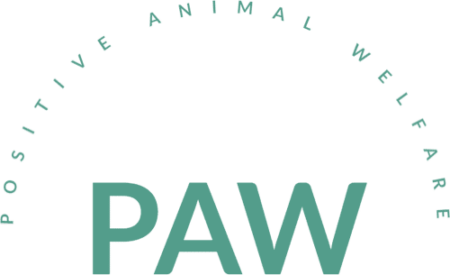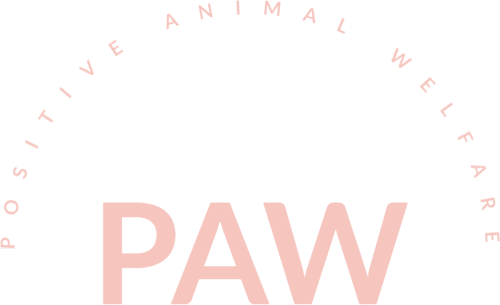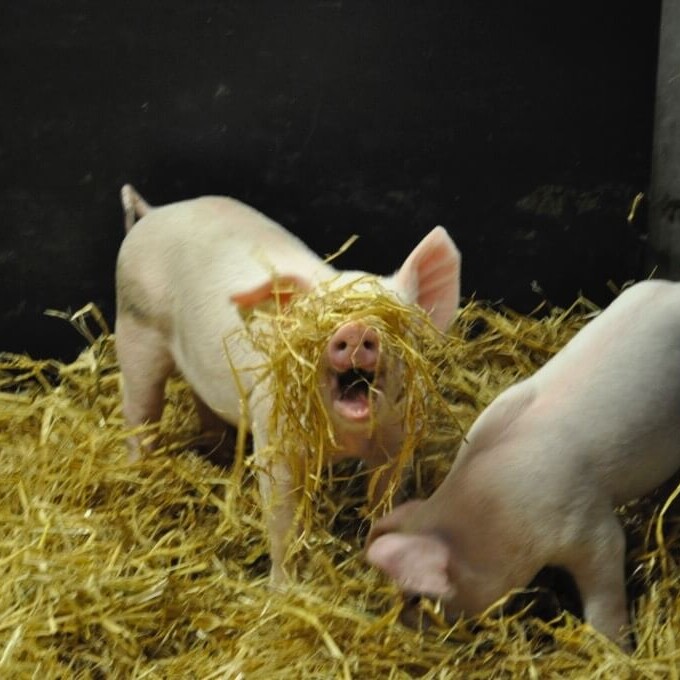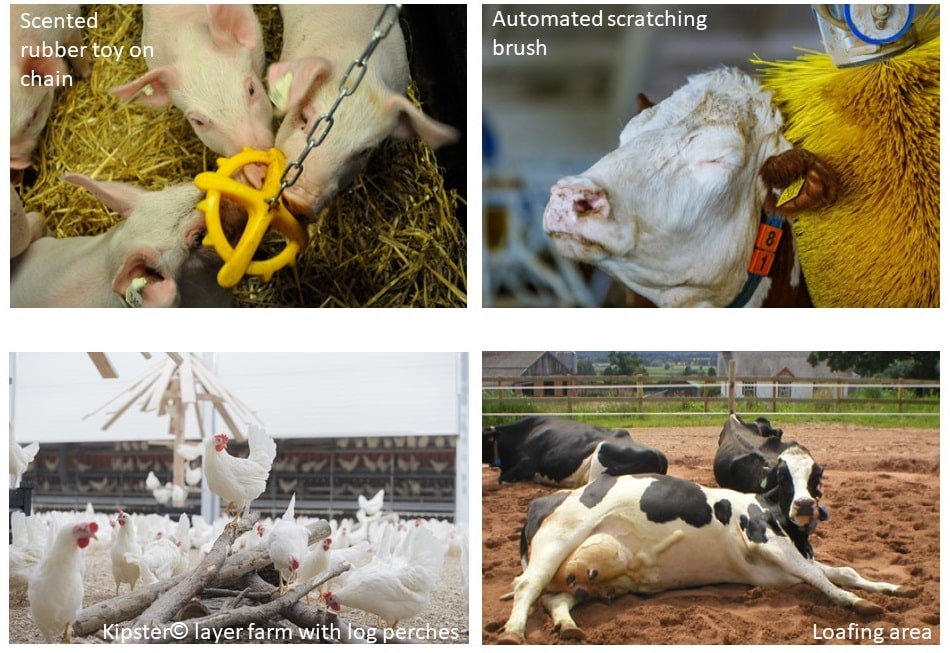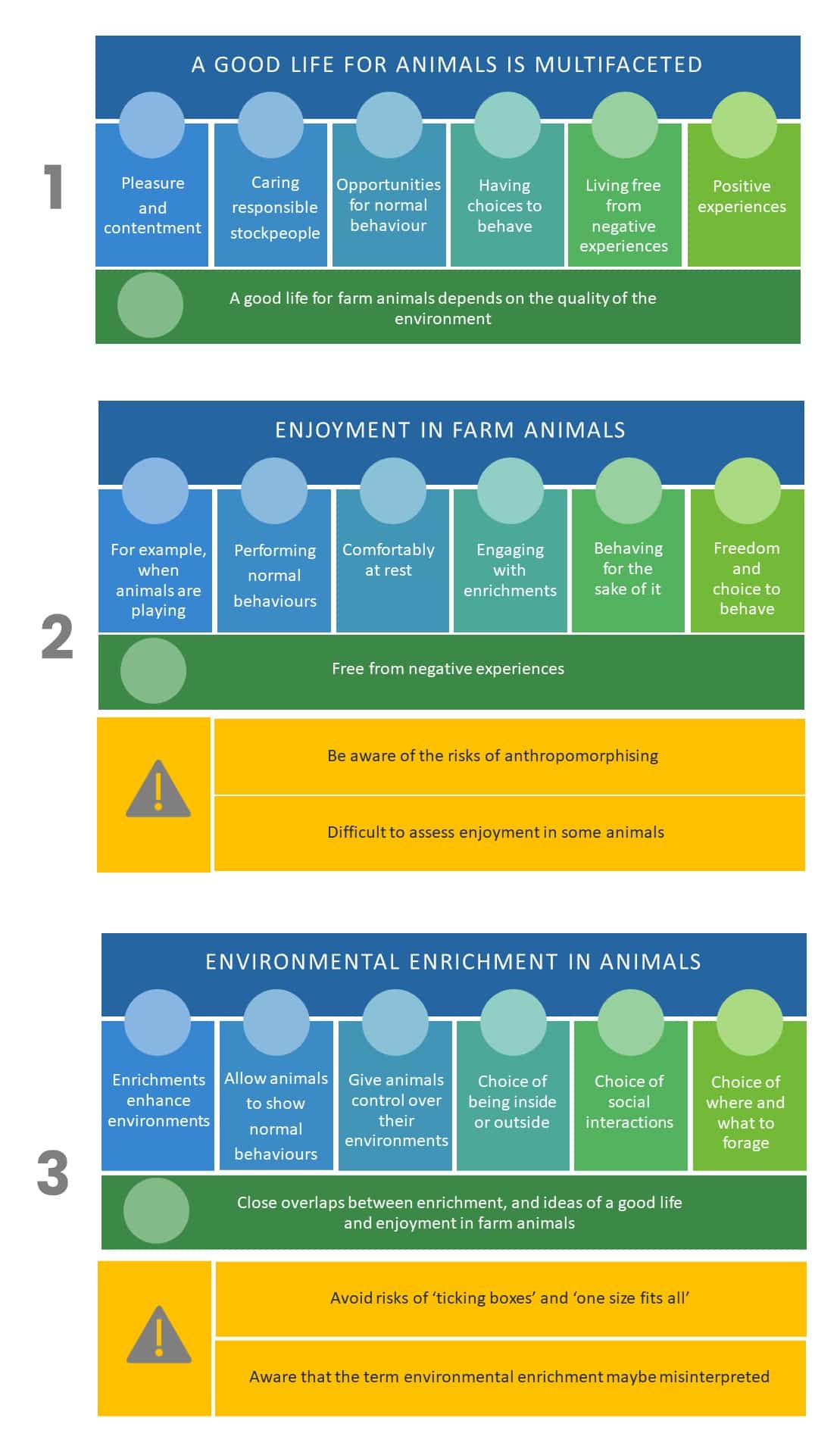Improving positive animal welfare in farm animals
PAW places emphasis on animals having positive experiences which they can get through engaging in and completing normal or species typical behaviours. However, many farm environments place constraints on expression of normal behaviours, which has been a major animal welfare concern since the publishing of the Brambell Report1.
Environmental enrichment (EE) refers to making changes to animals’ environments to increase environmental complexity and is a widely used concept in science (see Box 1).
EE is also seen as an important solution to improving PAW under intensive farming environments and supply of enrichment is now built into farm assurance standards and in some cases legislation2.
Despite the importance of EE to animal welfare there is uncertainty of how different stakeholders perceive EE, and how close these wider perceptions are to the scientific understanding of EE.
It is also not clear how EE operates in practice; for example what enrichments are provided for animals in different supply chains and how these enrichments are assessed for their effectiveness e.g., as a part of farm animal welfare assurance.
Box 1: The science of environmental enrichment (EE)
EE is studied in science for different reasons. In neuroscience it is used to study the effects of environmental complexity on a wide range of brain functions including neural plasticity (e.g., Kempermann, 20193). In animal welfare the question is whether enrichments improve welfare indicators e.g., reducing abnormal behaviours. There are several issues which span the science of EE. For example, there is the question of how much of a biological and welfare improvement different enrichments provide. Pseudo-enrichment is a term to describe EE that has little or no effect on the animals’ welfare. To guard against the dangers of pseudo-enrichment it has been proposed that EE should have functional importance to the animal including facilitating expression of normal behaviours (see Newberry, 19954).
Examples of different enrichments for farm animals in practice
This project:
This project will study perceptions of EE in a sample of stakeholders with experience of animal product supply chains. The project will also collate information on what EE is provided in different supply chains, how the effectiveness of EE is assessed and a cost: benefit analysis of enrichments.
Progress to date:
Phase 1: We have established a network of members from NGOs, retailers, industry bodies including farm assurance companies, and independent consultants; we will add to this network as required for future work. The current members (n=15) have been interviewed for their views on what represents a good life for farm animals, the importance of enjoyment to farm animals and the role of environmental enrichment in facilitating a good life for farm animals. We have analysed the data and produced a detailed report for stakeholders and synopsis which can be downloaded here.
Phase 2: We have started collating EE used in different supply chains. We are also exploring techniques developed in social science to aid complex decision-making. We are interested in whether these approaches can help in selection of EE based on various management, economic and animal welfare criteria.
The Project Team:
Funders:
See our recent publications:
- Lawrence, A.B., Vigors, B. and Sandøe, P., 2019. What is so positive about positive animal welfare?: a critical review of the literature. Animals, 9(10), p.783. doi: 10.3390/ani9100783.
- Wemelsfelder, F., Vigors, B. and Lawrence, A., 2022. A Good Animal Life: Bringing awareness of animal sentience into farming practice. Research Briefing RPC RB (2022/01)
- Vigors, B., Wemelsfelder, F., & Lawrence, A. B. (2023). What symbolises a “good farmer” when it comes to farm animal welfare? Journal of Rural Studies, 98, 159–170. doi.org/10.1016/j.jrurstud.2023.01.009
-
-
References:
1. Report of the Technical Committee to enquire into the welfare of animals kept under intensive livestock husbandry systems. Chairman: Professor F. W. Rogers Brambell. Cmnd. 2836, December 3 1965. Her Majesty’s Stationery Office, London. Referred to hereafter as the Brambell report.
2. van de Weerd, H. & Ison, S. (2019). Providing Effective Environmental Enrichment to Pigs: How Far Have We Come? ANIMALS, 9(5), 254. https://doi.org/10.3390/ani9050254
3. Kempermann, G. (2019). Environmental enrichment, new neurons and the neurobiology of individuality. Nature Reviews Neuroscience, 20, pages235–245. https://doi.org/10.1038/s41583-019-0120-x
4. Newberry, R.C., (1995). Environmental enrichment: Increasing the biological relevance of captive environments. Applied Animal Behaviour Science, 44(2-4), pp.229-243. https://doi.org/10.1016/0168-1591(95)00616-Z
